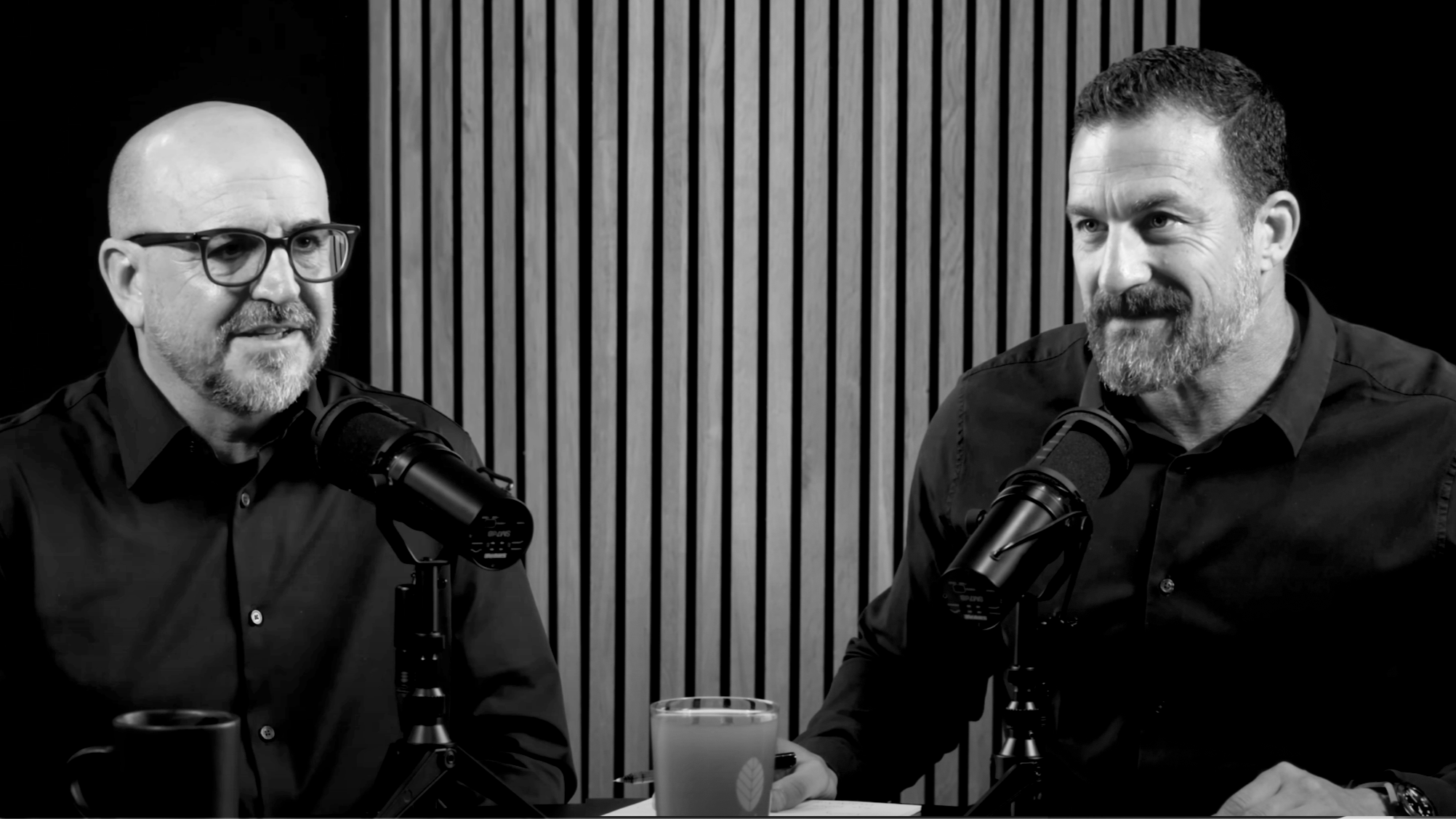How Contrast Prepares You for Life's Storms
If you’ve felt the sauna heat and braved the cold plunge at our Alchemy Springs sessions, you know the jolt, the calm that follows, and the quiet power of intentional breath and body awareness.
In a recent Huberman Lab episodes, Dr. Andrew Huberman sat down with Ryan Soave—a trauma-recovery specialist who has spent decades on the front lines helping people overcome addictions—especially behavioral ones like doom scrolling on social-media (something we all do from time to time…or every night?)
Here’s a recap—and how you, a seasoned Contrast practitioner, can apply this fresh lens at your next session.
The Sailboat That Stays Its Course
“Peace is not finding calmer seas, it’s building a better boat. How are we going to navigate the storm?”
— Ryan Soave
Picture yourself as an 18th-century sailor bound for the Atlantic—you’ve set your course, trimmed the sails, and you know exactly where you’re headed. When a sudden storm rolls in, you don’t panic and chase every shifting breeze; instead, you check your compass, consult your charts, and draw on hard-won experience to decide whether to ride out the gust or veer into calmer waters. Likewise, in our sauna and cold-plunge journey, those first waves of sauna and cold plunge shock are not signals to abandon ship but opportunities to pause, tune into your internal compass—your steady breath and keen body awareness—and then choose whether to lean in or adjust course. That’s how you build a better “boat”, by learning to navigate discomfort with intention.
This mindset echoes a warning: we too often confuse discomfort with true threat. Just as in Soave’s stormy seas, a Contrast session isn’t life-or-death, yet without a sturdy “boat” of breath control and body awareness, even short time in the heat-and-cold stressors can feel catastrophic. By anchoring in your breath and scanning through each sensation, you come to see every shift—from sauna warmth to icy plunge—as a chance to pilot your nervous system, not abandon ship.
Riding the Twenty-Second Tunnel of Clarity
“Cold water is a highly reliable way to spike adrenaline.”
— Andrew Huberman
Huberman explains that this spike shuts down your prefrontal planning circuits for about twenty seconds. Your logical thinking goes offline temporarily—but if you “stay put, keep breathing,” the brain rewires that shock back into calm. “The pre-frontal cortex snaps back online,” he says, inviting strategy instead of panic. And every cold plunge you’ve survived trains this skill: you’re literal proof that ice-cold stress can be repurposed from hijack to tool.
Breath as the Steering Wheel
“The breath is the mind made visible. If you want to change your mind, change your breath.”
— Ryan Soave
Huberman doubles down: “Long-exhale breathing is the fastest way to activate the parasympathetic system.” A slow out-breath flips the vagus-nerve brake, slowing the heart and softening panic. That’s why our first sauna round involves silently watching your breath — this allows you to anchor calm before the plunge. This same technique steadies you anytime your heart hits a redline —whether it’s an icy plunge… putting out fires at work, or handling conflict with your partner.
Body-Scan as Your Internal Radar
“A thirty-minute Yoga Nidra practice can raise dopamine release by about sixty-five percent.”
— Andrew Huberman
This is NSDR—non-sleep deep rest—a Yoga Nidra–style scan. You’ve already done this in the sauna rounds, when you scan your body crown-to-toe: noticing heat, tingles, pressure—whatever data your body is streaming —without judgment. This practice wires you to spot subtle signals. So when life’s stressors drop you into fight-or-flight, you’ll already be scanning sensations instead of reacting—exactly the skill you’ve honed watching heat meet ice.
Not All Stress Is Bad: The Two-Bucket Model
“We need stress… my muscles need to tense and I need that stress. It’s not about avoiding distress; it’s how we’re going to walk through that distress.”
— Ryan Soave
Soave invokes Hans Selye’s eustress vs. distress and divides this practice into proactive drills—NSDR, therapy, and our signature cold plunge—and reactive spikes like traffic jams or surprise deadlines. Keep your proactive bucket full, and real-world jolts start to feel like reruns of the plunge: heart races, breath steadies, clarity returns. Our Contrast therapy isn’t just a spa trip; it’s the resilience bank you’ll draw on all week.
Every time sauna heat meets icy plunge, you’re learning how discomfort can become your teacher. So next time you settle into the sauna or brace for the plunge, remember: you’re not just chasing endorphins—you’re building a boat that can weather any storm.
Ready to put these insights into practice?
We gather every Tuesday (and on select Saturdays) to hone our resilience together - come build a better boat with us. Check out our full calendar of classes and reserve your spot now.

